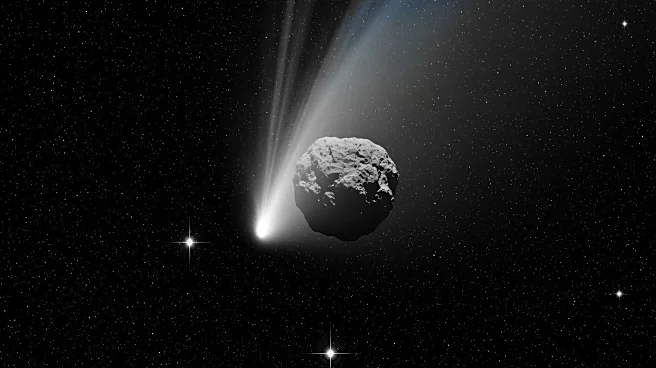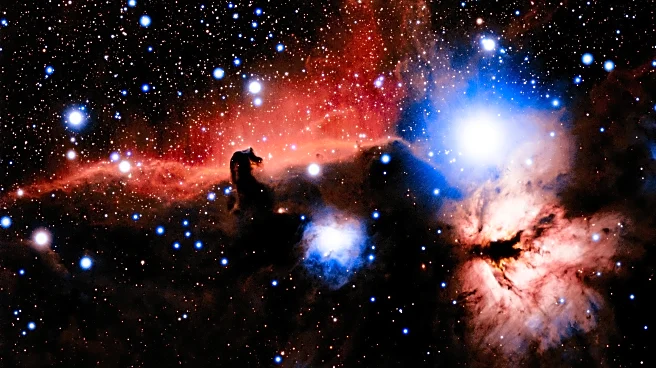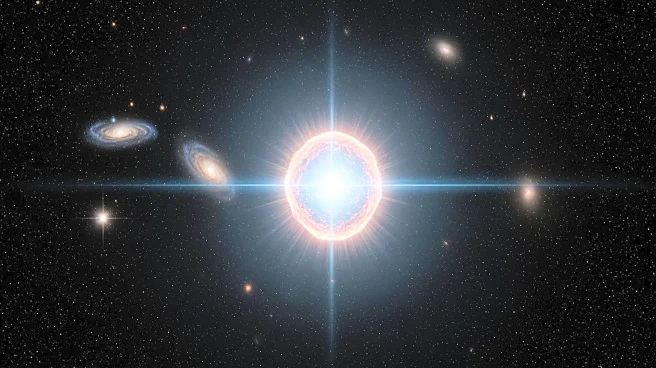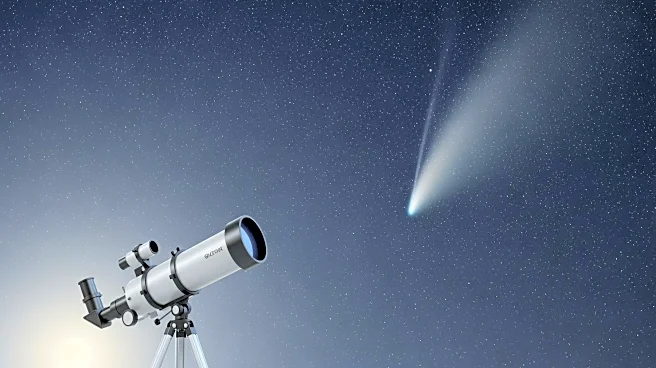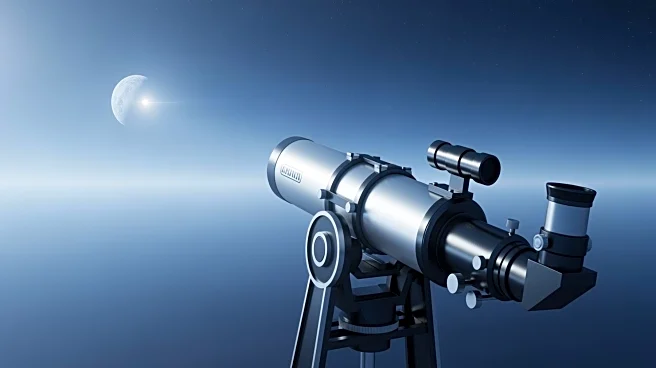What's Happening?
The interstellar comet 3I/ATLAS has re-emerged into view from Earth after passing behind the sun. Using the Lowell Observatory's Discovery Telescope in Arizona, astronomer Qicheng Zhang captured the first
optical images of the comet post-perihelion on October 31. The comet, which is only the third interstellar object ever recorded, is traveling through the solar system at speeds exceeding 130,000 mph. It reached its closest point to the sun, known as perihelion, on October 29. Zhang's observations suggest that the comet is visible with small telescopes across much of the Northern Hemisphere, appearing as a faint smudge in the sky. The comet's trajectory and rapid brightening near perihelion have provided scientists with valuable data, indicating significant gas emissions contributing to its brightness.
Why It's Important?
The reappearance of comet 3I/ATLAS offers a unique opportunity for astronomers to study an interstellar object in detail. As the comet heats up near the sun, its surface ice sublimates into gas, allowing researchers to analyze its composition. This could provide insights into the materials present in other star systems, enhancing our understanding of the universe. The comet's unusual trajectory and speed also challenge existing models of cometary behavior, potentially leading to new theories about the formation and evolution of interstellar objects. The data collected could have implications for the study of other interstellar visitors and the broader field of astronomy.
What's Next?
As comet 3I/ATLAS moves away from the sun, it will become more accessible to a wider range of telescopes globally. This will likely result in a surge of observational data, enabling further analysis of its composition and behavior. Researchers are expected to continue monitoring the comet to gather more information about its origins and characteristics. The scientific community anticipates that these observations will contribute to a deeper understanding of interstellar objects and their role in the cosmos.
Beyond the Headlines
The study of comet 3I/ATLAS also touches on broader questions about the nature of interstellar travel and the potential for life beyond our solar system. While some media speculation has suggested the comet could be an alien spacecraft, most astronomers agree it is a natural object. However, its study could inform discussions about the possibility of life in other star systems and the conditions necessary for its development. The comet's age, potentially older than the solar system itself, adds another layer of intrigue, offering a glimpse into the early universe.
